
When it comes to airports, runway length isn’t just a technical detail—it’s a matter of life, death, and whether your vacation starts with a smooth landing or a white-knuckled prayer. Most major commercial airports boast runways ranging from 8,000 to 13,000 feet, giving aircraft plenty of space to build momentum for takeoff or gradually slow down after landing.
 Photo- Barra Airport
Photo- Barra AirportShortest Airport Runways
The ideal runway length depends on aircraft type, airport altitude, surrounding geography, and weather conditions.
However, scattered across the globe are commercial airports operating with staggeringly short runways—some less than 2000 feet long—serving scheduled passenger flights in places where terrain, weather, or sheer remoteness leave little choice but to build small and hope for the best.
10. Gustaf III Airport (SBH) – Saint Barthélemy, Caribbean
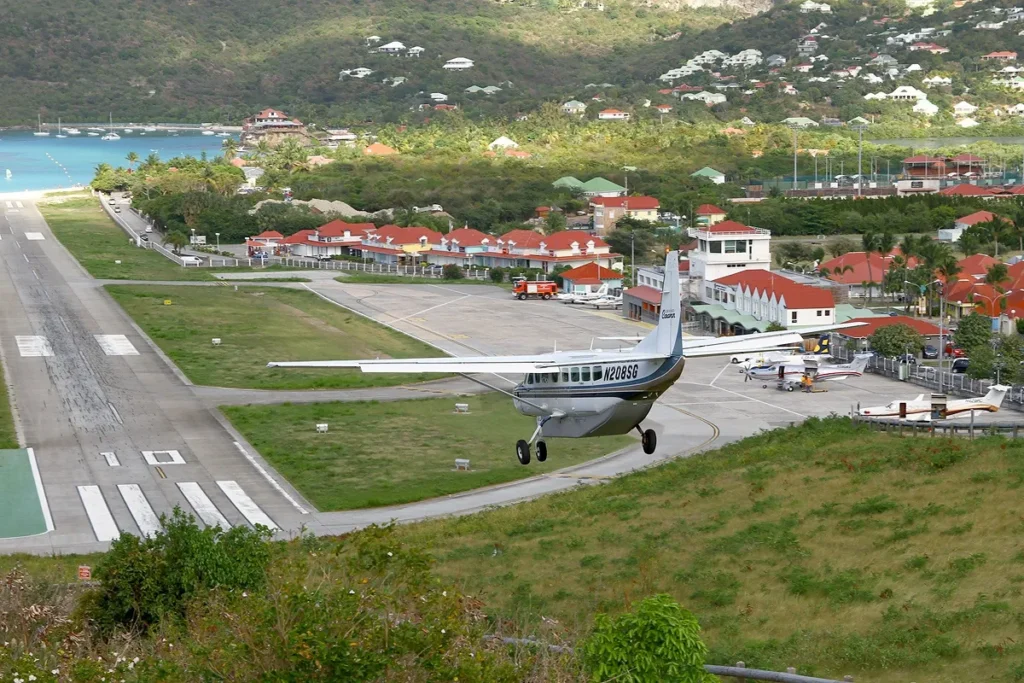 Gustaf III Airport, Caribbean; Photo- Wikipedia
Gustaf III Airport, Caribbean; Photo- WikipediaNestled in the village of St. Jean on the Caribbean island of Saint Barthélemy, Gustaf III Airport (SBH) boasts a runway measuring just 2,119 feet in length. What makes this airport particularly thrilling is its unique topography: a steep hill on one end and the pristine waters of St. Jean Beach on the other.
Given these demanding conditions, only specially certified pilots with additional training and supervised landings are authorised to operate here.
The airport accommodates small STOL (Short Takeoff and Landing) aircraft, including the Pilatus PC-12, Cessna 208B Grand Caravan, de Havilland DHC-6 Twin Otter, and Britten-Norman BN-2 Islander.
Despite its challenges, Gustaf III Airport (SBH) maintains an excellent safety record thanks to stringent regulations and pilot expertise, while providing aviation enthusiasts with one of the most scenic and heart-stopping approaches in the Caribbean.
9. John A. Osborne Airport (MNI) – Montserrat, Caribbean
 John A. Osborne Airport; Photo- ZJB Radio – Spirit of Montserrat (Facebook)
John A. Osborne Airport; Photo- ZJB Radio – Spirit of Montserrat (Facebook)Located on the northern end of Montserrat in the British West Indies, John A. Osborne Airport (MNI) serves as the sole aviation gateway to this volcanic Caribbean island. The single runway stretches just 1,814 feet, making it one of the world’s shortest commercial airstrips.
The mountainous surroundings and short runway restrict operations to small STOL aircraft, primarily the Britten-Norman BN-2 Islander and similar lightweight turboprops operated by regional carriers like Fly Montserrat (5M) and Air Antilles (3S).
Pilots must undergo specialised training to handle short-field landing techniques and adapt to sudden Caribbean weather shifts.
8. Courchevel Altiport (CVF) – Courchevel, France
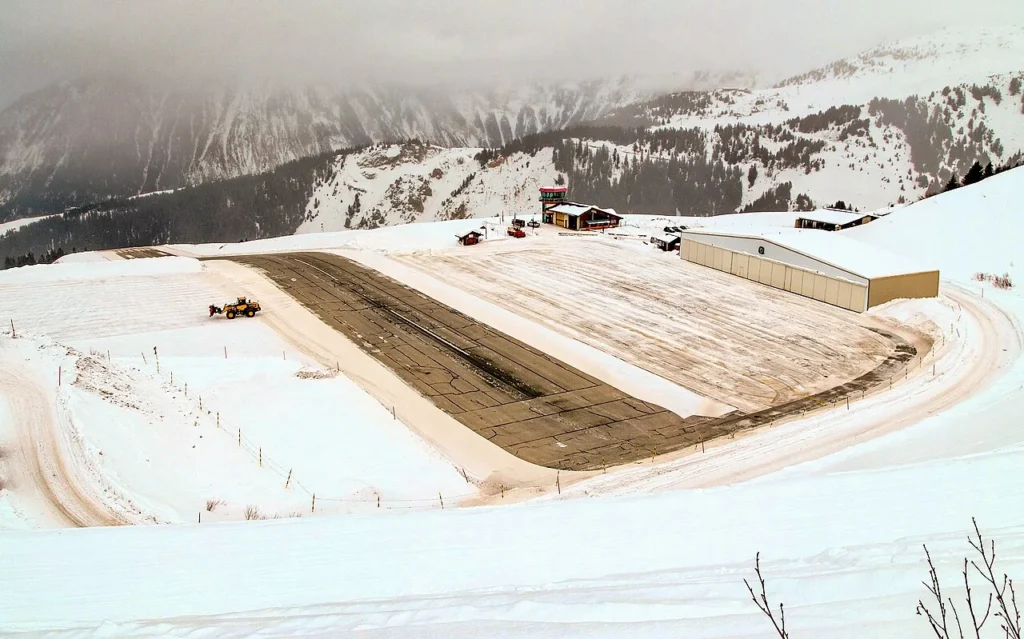 Courchevel Altiport; Photo- Wikipedia
Courchevel Altiport; Photo- WikipediaPerched high in the French Alps at 6,588 feet elevation, Courchevel Altiport (CVF) represents one of aviation’s most dramatic challenges. Its runway measures only 1,762 feet and features an incredible 18.7% gradient carved into a mountainside.
This unidirectional runway requires aircraft to land uphill and take off downhill, with absolutely no room for error or go-arounds—a rarity that makes it unique in global aviation.
Built to serve the upscale Courchevel ski resort, the altiport accommodates only small STOL aircraft and helicopters, including the Pilatus PC-12, Cessna 208 Caravan, and Airbus H130 helicopters. Operations require specialised mountain pilot certification under French civil aviation regulations, with strict training and experience criteria.
The airport doesn’t support night operations or instrument approaches, making visual conditions essential.
Weather can shift rapidly in the Alps, adding another layer of complexity to an already high-risk environment, but properly trained pilots handle these natural challenges with professional skill!
7. Tenzing-Hillary Airport (LUA) – Lukla, Nepal
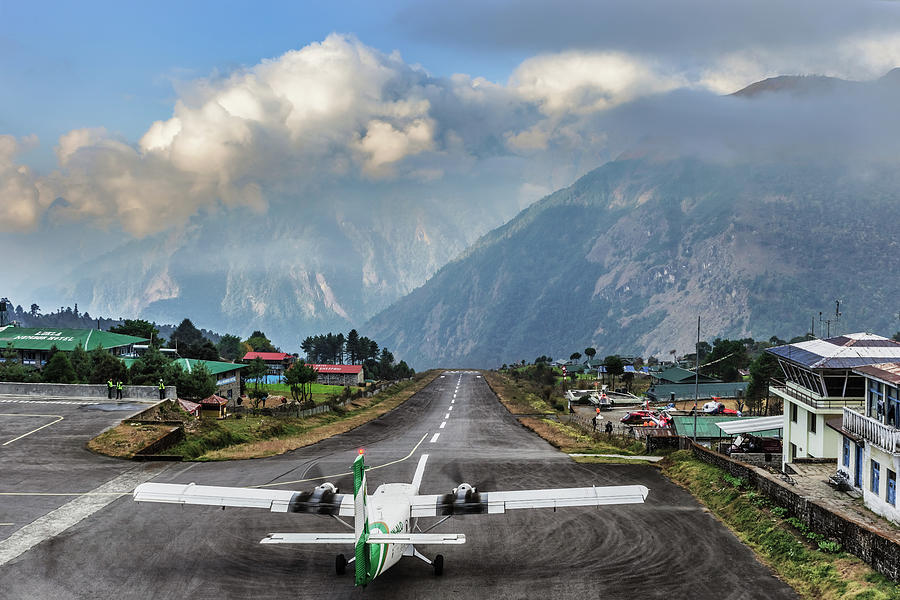 Tenzing-Hillary Airport, Lukla; Photo- Facebook
Tenzing-Hillary Airport, Lukla; Photo- FacebookOften called the world’s most dangerous airport, Tenzing-Hillary Airport (LUA) in Lukla, Nepal, serves as the adrenaline-filled gateway to the Himalayas. At just 1,729 feet long, this sloped runway sits on a narrow mountain shelf at 9,334 feet altitude, surrounded by cliffs and towering peaks.
The extreme geography leaves zero room for error—the runway starts at a cliff edge and ends at a solid rock wall, offering no chance for go-arounds.
The steep 12% gradient helps slow landing aircraft while aiding takeoff acceleration. Only experienced pilots with STOL operations certification and specific mountain flying credentials can operate here, often requiring additional simulator training.
Aircraft servicing the airport include the de Havilland Canada DHC-6 Twin Otter and Dornier 228, chosen for their high-altitude reliability and manoeuvrability.
6. St. Mary’s Airport (ISC) – Isles of Scilly, United Kingdom
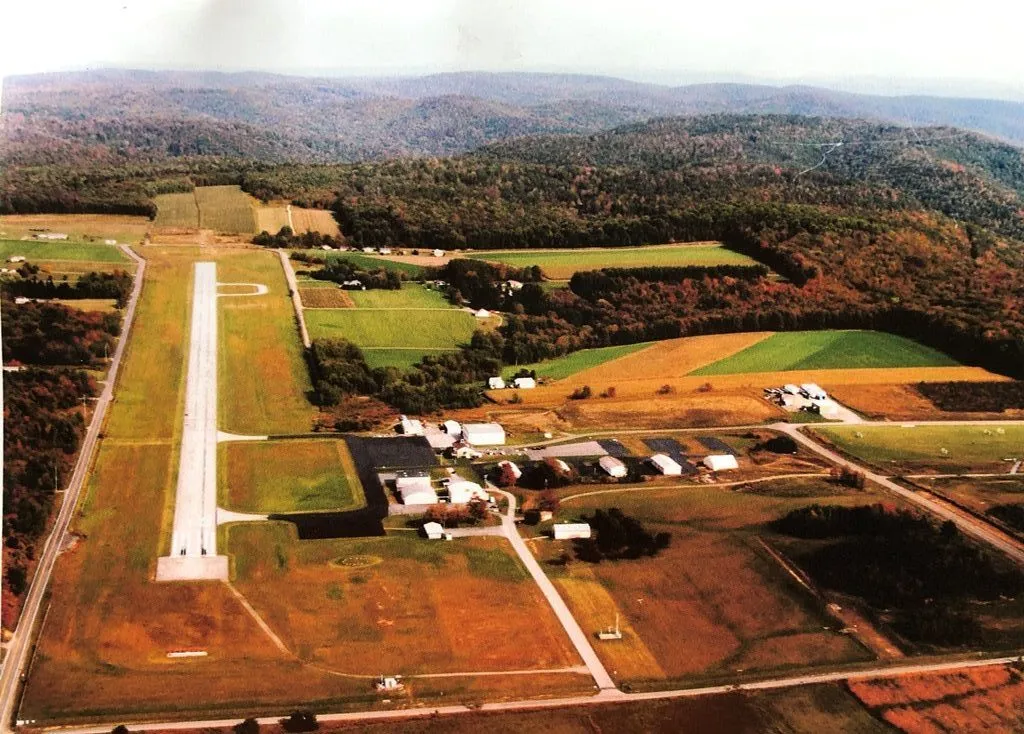 Photo- St. Mary’s Airport
Photo- St. Mary’s AirportLocated on St. Mary’s, the largest of the Isles of Scilly off Cornwall’s southwest coast, this airport serves as the primary aviation lifeline between the remote archipelago and mainland England. The main runway measures just 1,722 feet, making it among the world’s shortest.
Regional carrier Skybus (SX) currently services the airport using de Havilland DHC-6 Twin Otters and Britten-Norman Islanders, connecting St. Mary’s to Land’s End, Newquay, and Exeter.
Pilots require special training for the shifting coastal winds, changing weather patterns, and tight approach paths over water and rocky cliffs.
5. Barbuda Codrington Airport (BBQ) – Barbuda, Caribbean
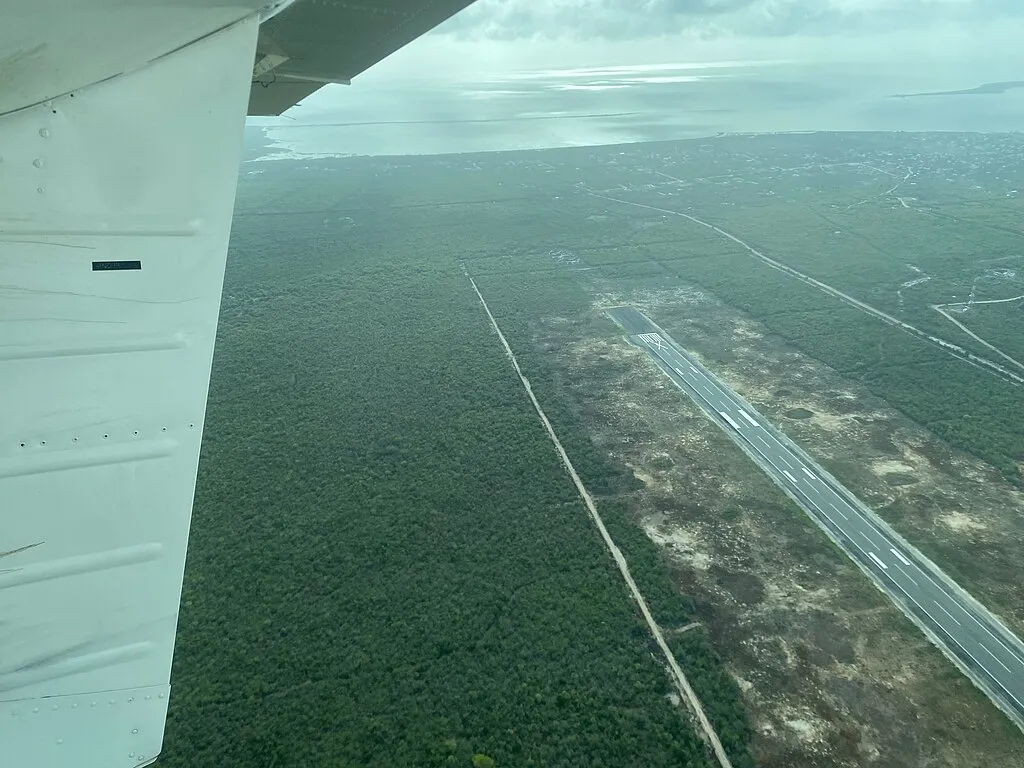 New Barbuda Airport; Photo- Wikipedia
New Barbuda Airport; Photo- WikipediaBarbuda Codrington Airport (BBQ) served as a modest but essential aviation gateway to Barbuda, the lesser-known sibling to Antigua. Its runway measured just 1,640 feet, making it one of the Caribbean’s shortest.
Following extensive rebuilding and upgrades, flights were operated by carriers like SVG Air and Caribbean Helicopters using Britten-Norman Islanders and Cessna 402s. Pilots are required to have experience with short-field procedures and trade wind management.
In October 2024, the facility was replaced and expanded to become Barbuda International Airport (BBQ), though the original runway exemplified how small-scale infrastructure delivered significant logistical value.
4. Inishmore Aerodrome (IOR) – Aran Islands, Ireland
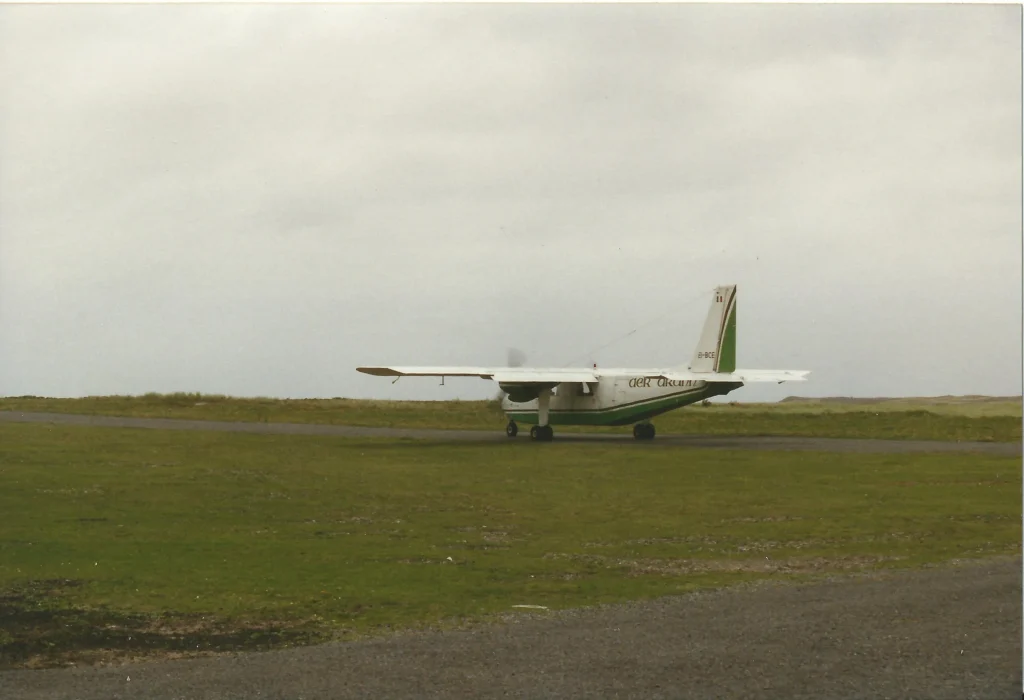 Inishmore Aerodrome; Photo- Ardfern | Wikimedia Commons
Inishmore Aerodrome; Photo- Ardfern | Wikimedia CommonsSet against Ireland’s rugged Atlantic coastline, Inishmore Aerodrome (IOR) provides the vital air link to the largest of the Aran Islands, Inis Mór. The single runway measures just 1,608 feet, making it one of Europe’s shortest commercial runways.
Operated by Aer Arann Islands using the Britten-Norman BN-2 Islander—a twin-engine aircraft designed specifically for STOL operations on rural airstrips—the service handles challenging Atlantic weather, including crosswinds and rolling fog.
Pilots require STOL certification and familiarity with the island’s microclimates. While the approach isn’t as visually dramatic as mountain runways, the low altitude, compact layout, and coastal exposure demand precision and experience.
3. Heligoland Airport (HGL) – Heligoland, Germany
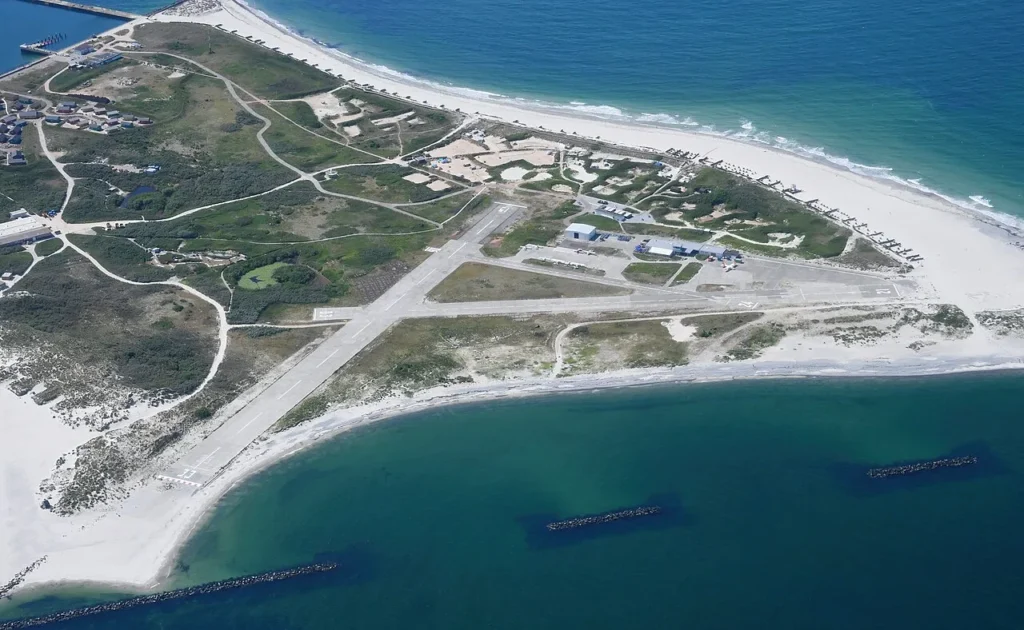 Heligoland Airport, Germany; Photo- Wikipedia
Heligoland Airport, Germany; Photo- WikipediaSituated on Germany’s only offshore island, Heligoland Airport (HGL) operates one of Europe’s shortest commercial runways at just 1,575 feet. With its aircraft carrier-like feel, the airport demands similar precision from pilots navigating this unique maritime environment.
The oceanfront exposure and short length restrict operations to small STOL-capable aircraft, primarily the Britten-Norman Islander operated by OFD (Ostfriesischer-Flug-Dienst) on scheduled flights to mainland cities like Nordholz and Cuxhaven.
Landings require specialised short-field training to account for shifting crosswinds, low visibility, and occasional seabird runway crossings.
2. Juancho E. Yrausquin Airport (SAB) – Saba, Caribbean Netherlands
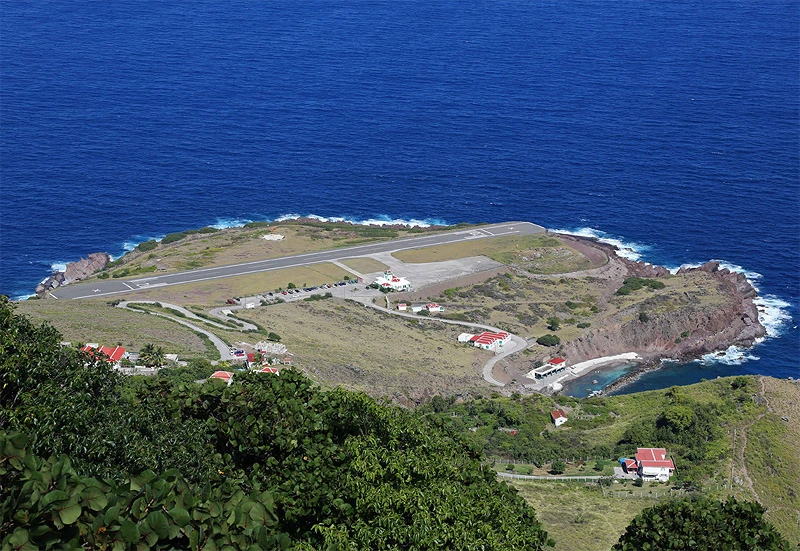 Juancho E. Yrausquin Airport; Photo- Wikipedia
Juancho E. Yrausquin Airport; Photo- WikipediaLocated on the Dutch Caribbean island of Saba, Juancho E. Yrausquin Airport (SAB) officially operates the world’s second-shortest commercial runway at just 1,312 feet. Carved from a narrow strip of land with cliffs on one side and the ocean on the other three, this runway offers no room for error, no space for go-arounds, and no night operations!
Only specially certified pilots can land here, exclusively using small STOL-capable aircraft. The De Havilland DHC-6 Twin Otter serves as the route workhorse, typically operated by Winair (WM) on daily flights to and from Sint Maarten.
The approach requires a sharp descent over mountainous terrain, followed by precise alignment with an airstrip ending dramatically at a cliff’s edge. Departures launch aircraft directly over the ocean with no hesitation margin.
Despite the daring design, the airport maintains an impressive safety record through strict operational rules and experienced crews, providing thrill-seeking travellers with a once-in-a-lifetime aviation experience.
1. Out Skerries Airport (OUK) – Shetland Islands, Scotland
 Out Skerries Airport; Photo- Wikipedia
Out Skerries Airport; Photo- WikipediaRemote and windswept, Out Skerries Airport (OUK) holds the distinction of operating the world’s shortest commercial runway at just 1,195 feet.
The airport historically supported flights by Directflight (formerly Loganair) using Britten-Norman Islanders specifically built for STOL operations and high-wind conditions common across the Scottish Isles.
Due to the ultra-short runway and unpredictable weather, only a small number of certified pilots could land here.
Operations have been sporadic in recent years due to funding and logistical constraints, though when active, the airport served as a critical lifeline offering medical evacuation capabilities and improved mobility where sea travel isn’t always feasible.
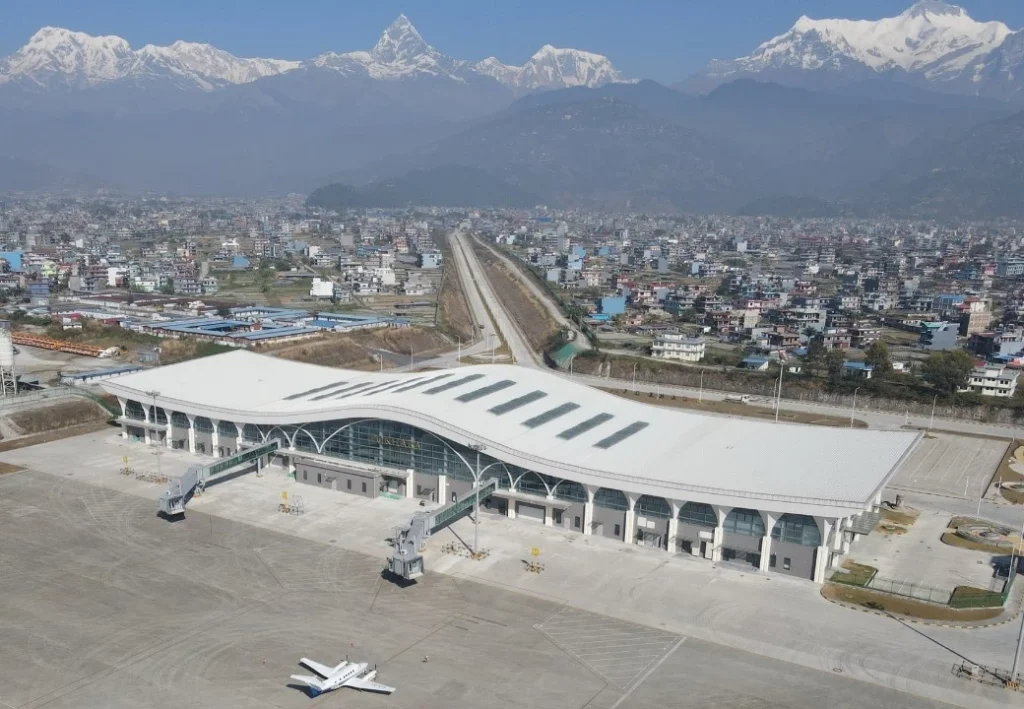 Photo- Spokesperson Of the Chinese Embassy In Nepal (X)
Photo- Spokesperson Of the Chinese Embassy In Nepal (X)Bottom Line
These 10 airports prove that sometimes the shortest distance between two points involves landing on what feels like a postage stamp. While most travellers prefer runways that stretch beyond the horizon, these remarkable facilities demonstrate human ingenuity and the lengths we’ll go to stay connected—even when “length” is exactly what we don’t have.
From volcanic islands to Alpine peaks, each represents a triumph of aviation engineering over geography, reminding us that sometimes the most memorable journeys begin with the most heart-stopping landings!
Stay tuned with us. Further, follow us on social media for the latest updates.
Join us on Telegram Group for the Latest Aviation Updates. Subsequently, follow us on Google News
Top 10 Most Dangerous Airports in the World, No.4 Will Surprise You
The post Top 10 Shortest Commercial Airport Runways in the World appeared first on Aviation A2Z.

 5 miesięcy temu
5 miesięcy temu












